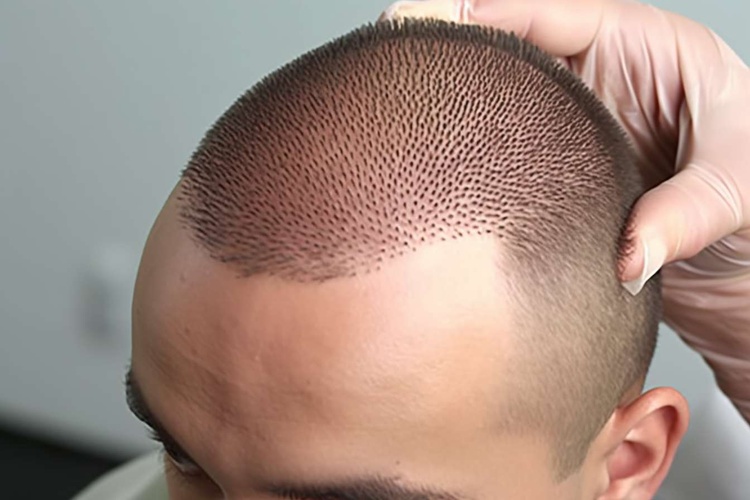Essential Hair Transplant Guide: Restore Your Hair Safely
Struggling with hair loss? This in-depth guide explains modern hair transplant options, candidacy criteria, expected recovery, risks, and timelines. Learn about FUT and FUE techniques, what the procedure entails, realistic outcomes, and typical costs to help you make an informed decision about hair restoration.

Hair loss affects many people and can undermine confidence. Advances in surgical techniques now offer reliable ways to rebuild hair density and natural-looking hairlines. This guide walks through who benefits from hair transplants, the main surgical approaches, what happens during and after the operation, possible complications, and how long results typically take to appear.
Who is a good candidate for a hair transplant?
Hair transplantation is most effective for people whose hair loss follows a predictable pattern, such as male or female pattern baldness (androgenetic alopecia). Ideal candidates generally share several characteristics:
- Adequate donor supply: Successful transplantation depends on having healthy hair follicles in the donor area (usually the back and sides of the scalp) that can be moved to thinning or bald regions.
- Stable hair loss: Candidates should have a relatively stable pattern of hair loss so the surgeon can plan long-term coverage.
- Overall good health: As with any minor surgery, being in good general health reduces the risk of complications and supports recovery.
- Realistic expectations: Understanding the limits of transplantation—what density can be achieved and whether multiple sessions might be needed—helps ensure satisfaction.
A consultation with a qualified specialist is essential to evaluate donor hair quality, assess scalp condition, and determine whether non-surgical options (medications, PRP) should be tried first or combined with surgery.
Main hair transplant techniques explained
Two techniques dominate modern practice:
-
Follicular Unit Transplantation (FUT): Also called the strip method, FUT involves removing a narrow strip of scalp from the donor region. The strip is dissected into individual follicular units which are then implanted into recipient sites. FUT can yield many grafts in a single session but leaves a linear scar.
-
Follicular Unit Extraction (FUE): With FUE, individual follicular units are extracted directly from the donor area using a small punch instrument. Because grafts are taken one-by-one, scarring appears as tiny dot scars rather than a single line, and recovery can be quicker. FUE is often preferred for patients who want shorter haircuts or less visible scarring.
Both methods can produce excellent, natural results when performed by experienced surgeons; the choice depends on factors like the amount of donor hair, the size of the transplant, scarring considerations, and patient preference.
What to expect during the procedure
A typical transplant day includes several steps:
- Pre-op assessment: The surgeon maps the recipient area, discusses hairline design, and reviews your medical history.
- Preparation: The scalp is cleaned and local anesthesia is applied to numb donor and recipient zones.
- Harvesting: Follicles are collected via FUT or FUE, depending on the plan.
- Recipient site creation: Tiny incisions are made to mimic natural hair angles and direction.
- Implantation: Grafts are carefully placed into the recipient sites for optimal placement and angle.
The entire procedure may last several hours; larger cases can take a full day or multiple sessions. Most patients go home the same day with detailed aftercare instructions.
Possible risks and side effects
Hair transplant surgery is generally safe, but potential complications include:
- Infection: Uncommon with proper sterile technique and post-op care, but possible.
- Bleeding: Minor bleeding is expected during and immediately after the procedure.
- Scarring: FUT leaves a linear scar; FUE produces tiny dot-like scars. Scarring varies by individual healing.
- Shock loss: Temporary shedding of native hair around the transplanted area can occur but often regrows.
- Unsatisfactory appearance: Poor planning or execution can produce unnatural density or direction. Choosing an experienced surgeon reduces this risk.
Careful pre-op evaluation, adherence to post-op instructions, and follow-up with your surgeon help minimize complications.
When will you see new hair growth?
Transplanted hair follows a predictable timeline:
- 2–3 weeks: Transplanted strands usually shed, a normal phase called shock loss.
- 3–4 months: New hair begins to emerge from the implanted follicles.
- 6–9 months: Noticeable increase in density and length.
- 12–18 months: Final cosmetic results are typically visible, with fuller coverage and natural texture.
Some patients require a second session to achieve desired density, especially when donor hair is limited or hair loss progresses.
| Procedure | Typical cost range (USD) | Typical recovery time |
|---|---|---|
| FUE | $4,000 – $15,000 | 7 – 14 days |
| FUT | $3,000 – $12,000 | 10 – 14 days |
Cost disclaimer: Prices are estimates and vary widely by clinic, geographic region, surgeon experience, and the number of grafts required. Consult directly with a clinic for personalized pricing.
Making an informed decision
A hair transplant can be a durable solution for many people dealing with patterned hair loss. The key steps to a successful outcome are selecting a qualified, experienced surgeon, having a realistic understanding of what can be achieved, and following pre- and post-operative care instructions. Discuss all alternatives and combine treatments (such as topical or oral medications, PRP) when appropriate to protect existing hair and maximize results.
This article is for informational purposes only and should not be considered medical advice. Please consult a qualified healthcare professional for personalized guidance and treatment.






